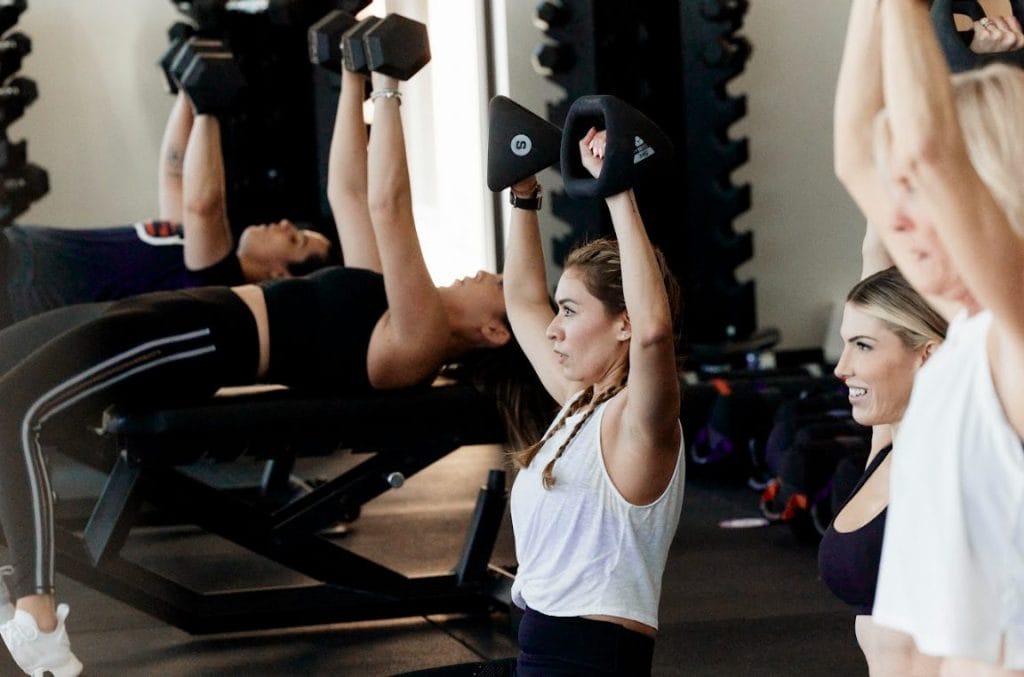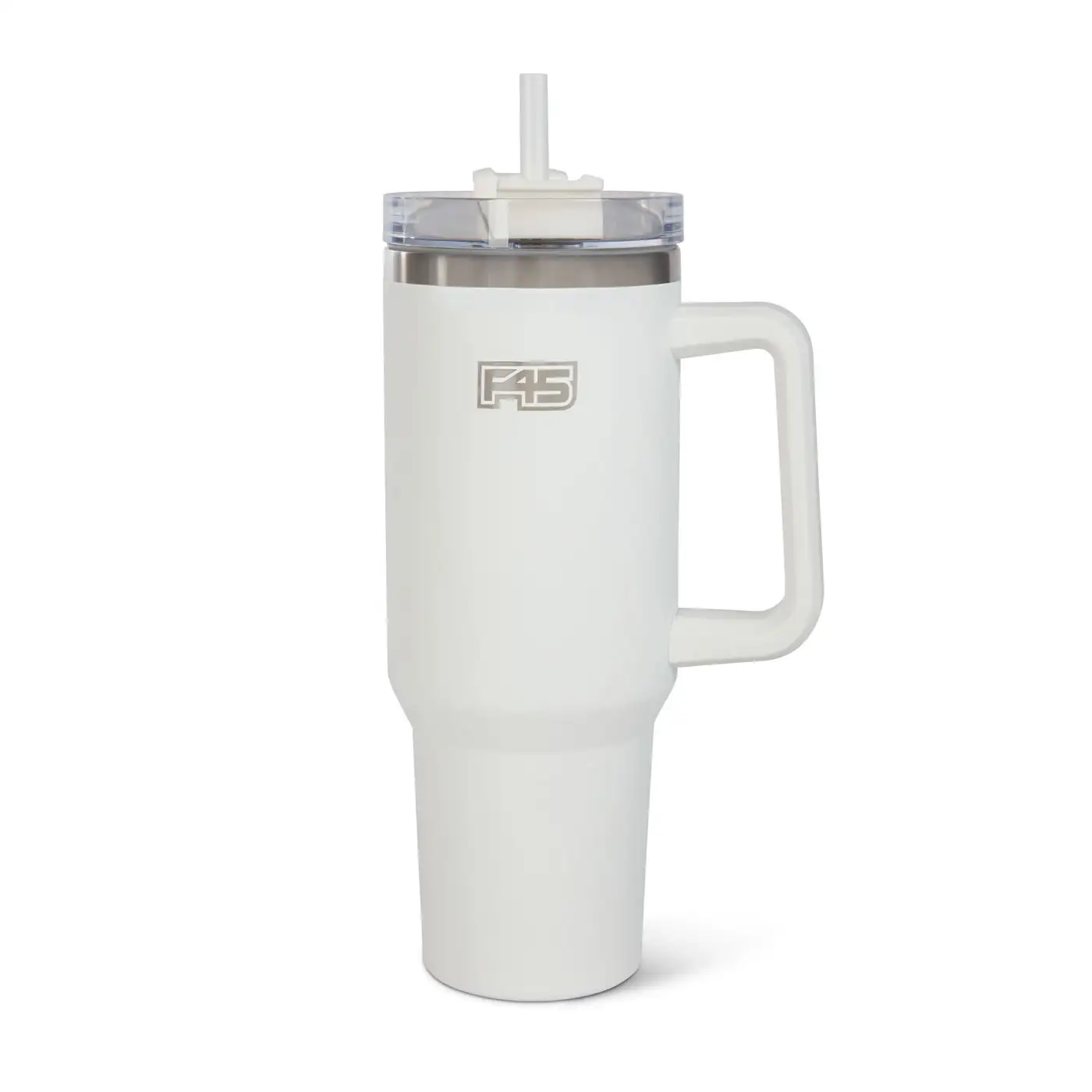When you experience perimenopause and menopause, it’s natural for the body to undergo various physical and mental changes. This can include muscle loss, fat gain, changes in body shape and composition, mood irregularity, increased stress, and joint and muscle aches.¹ However, adhering to a regular menopause exercise plan can produce significant benefits and may help reduce some perimenopausal and menopausal symptoms.
Perimenopause, the transitional phase before menopause, commonly happens between ages 45-55 (but can occur before this)² and can last anywhere from 2-8 years.³ True menopause happens 12 months after a woman’s final menstrual period.²
In the below guide, the F45 experts shed some light on the topic of exercise and menopause. Continue reading as we break down F45 workout tips to bolster your physical and mental health during this transitional period and beyond.
Exercise and menopause: Is it safe?
Sedentary lifestyles can have negative impacts on every body type, but for individuals going through menopause, this can exacerbate physical symptoms. This is one of the primary reasons why exercise offers many advantages for perimenopausal and menopausal women. It is never too late to start exercising, but it’s important that you don’t overextend yourself. Menopausal women will have naturally lower bone density and are therefore more susceptible to osteoporosis and arthritis. If you are osteoporotic or have low bone density, high-impact, high-intensity workouts are among the exercises to avoid during menopause.4 In this case, we would recommend moderate strength training exercises and moderate intensity workouts where a fall is unlikely.
The benefits of exercise for perimenopause and menopause
A consistent, varied menopause exercise plan can benefit perimenopausal and menopausal women in a number of ways to mitigate muscle loss, reduced bone density, increased fat and mood changes.
Physical benefits:
- Resistance training can help increase muscle strength, protecting your joints from injury and combating menopausal muscle loss.
- Can help you burn fat and achieve a calorie deficit to minimise the weight gain associated with perimenopause.4
- Improves balance and reduces the risk of falls.5
- A combination of cardio and resistance training may help lessen the risk of heart disease post-menopause.6
Mental benefits:
- Can help reduce stress and anxiety.
- Releases mood-boosting endorphins to help cope with mood changes during perimenopause.4
- Sleep is challenging during menopause, but exercise promotes better sleep quality for many individuals.
Crafting a menopause workout plan
So, what best exercise is for menopause? This largely depends on the individual, but as a baseline, your perimenopause or menopause exercise plan should include a combination of cardio, strength training and recovery days. However, we recommend that you seek the advice of a qualified trainer to modify your menopause workout plan so that it aligns with your abilities and adjust when your strength and fitness improves. To help you build a sustainable fitness routine, we have included our top picks for perimenopausal and menopausal workouts below.
Strength training
There are extensive strength training benefits to support your physical health, but this is especially true for women experiencing perimenopause and menopause. F45 Resistance workouts are designed to help you build muscle mass to improve your physical health and strengthen your joints, which ultimately helps slow the rate of bone loss and the onset of osteoporosis5 during perimenopause and menopause. Our workouts will give you a solid base of functional strength and power, while also burning calories during and post-workout.
Cardio exercises
Performing cardio exercises for perimenopause and menopause is a great way to manage weight gain. F45 Cardio classes involve plyometric movements at various tempos to give you a full-body, fat-burning workout that targets your aerobic and anaerobic systems. Our classes are high-energy to help you build stamina and endurance, giving you the foundational tools to curate your menopause exercise plan with the support of qualified instructors. Ensure that you discuss any physical conditions (like osteoporosis) with our trainers to modify any high-intensity movements.
Mobility and flexibility workouts
One of the key principles of exercise and menopause is to prioritise variety in your workout plan. This means not only focusing on boosting muscle strength and blasting fat, but including slower, gentler movements that work on restoring the body in between more intense exercise classes. Blending a mixture of active and passive exercises, F45 Recovery workouts target flexibility and mobility, working with you to improve range of motion, posture awareness and balance – qualities that can deteriorate with menopause and age. These low-impact workouts also foster a stronger mind-body connection which can act as a notable stress-reliever.
Other non-weight bearing exercises
In addition to cardio group fitness classes, you can also integrate other aerobic exercises into your menopause workout plan. This may include cycling, swimming, dancing, jogging or even walking.4 The goal is to keep the body moving and the heart pumping, and these types of exercises are simple to weave into your daily lifestyle alongside your strength and cardio training at F45.
If you’re interested in taking your menopause workout plan to the next level, consider choosing the F45 Challenge.
1 https://www.nia.nih.gov/health/menopause/what-menopause
2 https://www.thewomens.org.au/health-information/menopause-information/menopause-an-overview
3 https://www.womenshealth.gov/menopause/menopause-basics
4 https://www.ncbi.nlm.nih.gov/pmc/articles/PMC3296386/
5 https://www.betterhealth.vic.gov.au/health/conditionsandtreatments/osteoporosis-and-exercise
6 https://www.sciencedirect.com/science/article/abs/pii/S0378512224000124















